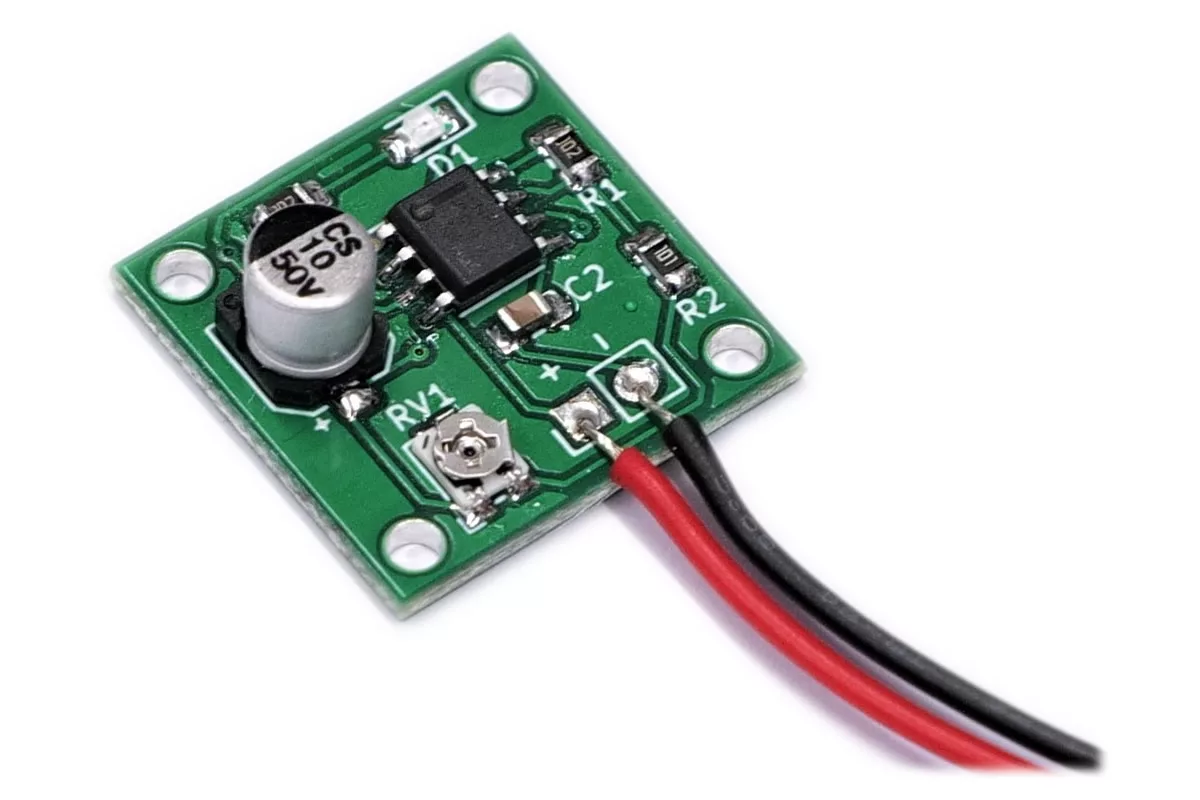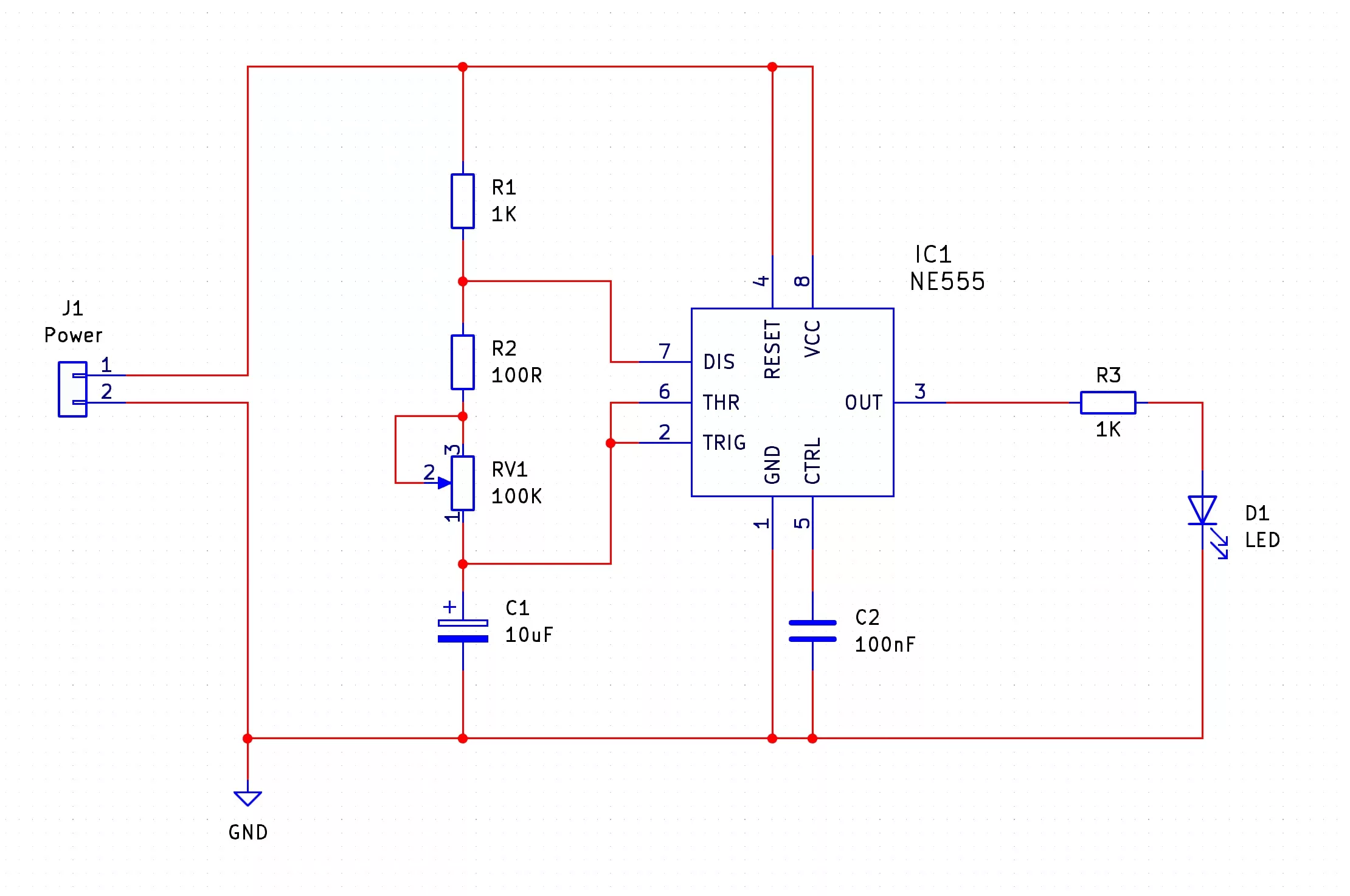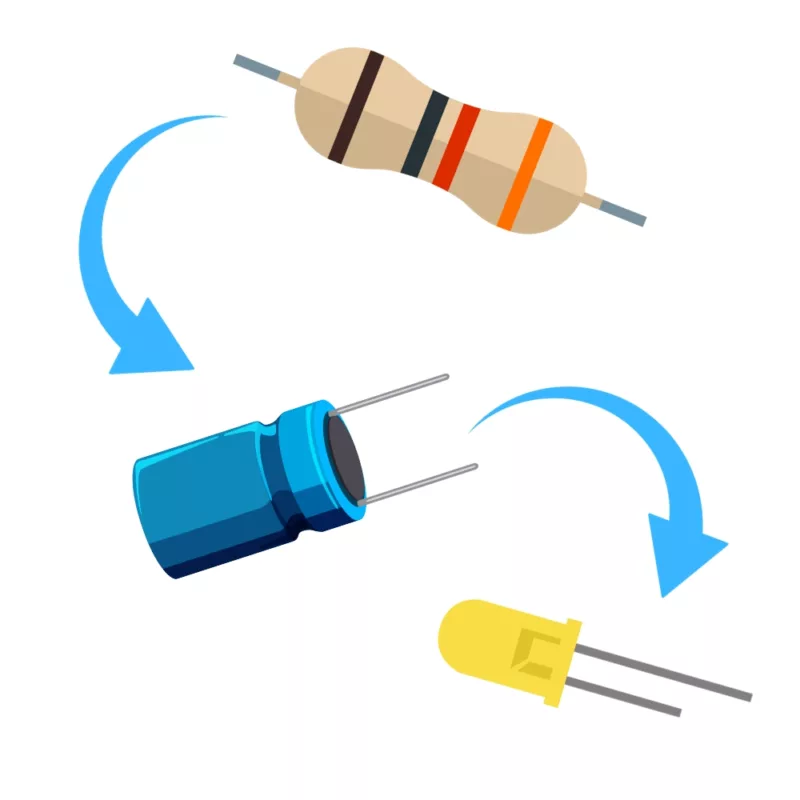555 Astable SMD Trainer Instructions
robinmitchell2024-02-04T11:42:40+00:00555 Astable SMD Trainer Instructions
Table of Contents

Introduction
What is the 555 Astable SMD Trainer?
The 555 Astable SMD Trainer kit is designed to test your skills at SMD soldering and provides you with a small circuit that blinks. The frequency of the blink is determined by the value of the electrolytic capacitor and the setting of the potentiometer such that the smaller the size of the capacitor or resistance value of the potentiometer, the 555 astable will flash quicker. To learn more about the 555 timer and how it works, you can check out the instructions for the 555 Astable kit from MitchElectronics which also includes the internal circuit diagram of the 555 itself.

What can you do with the 555 Astable SMD Trainer?
Besides the obvious use of improving your skills with soldering SMD parts, there are numerous uses for the kit. One potential application is to use the flashing LED as a night locator that can be attached to the back of a bag. Simply put, these kits can be ideal for quickly locating others at night during hikes in a similar fashion to tail and wing lights on planes.
On that note, the 555 Astable SMD Trainer can also be used on model RC planes that want to replicate the blinking lights used to locate craft at night. The SMD LEDs, albeit small, are brighter than you’d think, and can thus be used as a visual aid at a great distance during the night.
555 Astable circuits in general are also excellent for pulsing circuits that need to turn something on and off at regular intervals. One such example is a clock source for digital logic circuits that need a regular pulsing voltage (however, if using the 555 Astable with logic circuits, make sure the logic circuit operates at the same voltage as the 555 Astable otherwise you will likely damage the logic circuit).
Schematic

Component List
| Component | PCB Reference | Quantity | Looks Like |
|---|---|---|---|
| 555 Timer IC SOIC8 | IC1 | 1 | |
| 0805 100R Resistor | R2 | 1 | |
| 0805 1K Resistor | R1, R3 | 2 | |
| 0805 100nF Capacitor | C2 | 1 | |
| 10uF Capacitor | C1 | 1 |  |
| 100K Potentiometer | RV1 | 1 |  |
| 0805 Red LED | D1 | 1 |  |
| PP3 Connector | J1 | 1 |  |
PCB



Construction Tips

3D Printable Jig
To help keep the board stable when soldering, you can download a free STL model of a basic jig that can be 3D printed with all common 3D printers. Watch out for the mounting hole pins as they may be vulnerable to snapping if using a low infill density, low wall thickness, or thick layer heights. Additionally, do not use hot air to solder the PCB when using the jig as you will melt the jig.

SMD Construction Guide
To learn more about how to solder SMD components, read through the MitchElectronics SMD Soldering Guide found in our resources section

Component Order
When soldering the 555 Astable kit, you will need to pay attention to the following chapters in the SMD soldering guide (which can be seen here). You should also solder the components in the order shown below.
- Integrated Circuits
- Resistors
- Capacitors (ceramic)
- Capacitors (Electrolytic)
- LEDs
Make sure that the LED, IC, and electrolytic capacitor are oriented correctly as they are polarised components. Inserting the LED in the wrong orientation will result in no light, and inserting the 555 IC the wrong way round will overheat and break. Components such as the resistors can be soldered in any orientation, and the potentiometer can only be inserted in one direction due to the use of 3 unevenly spaced feet.
Finally, ensure that you connect the battery connector correctly with the red wire connecting to the + terminal, and the black wire connecting to the – terminal.
